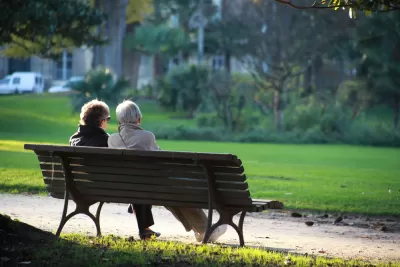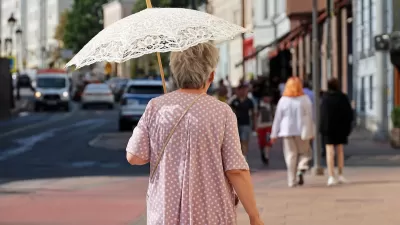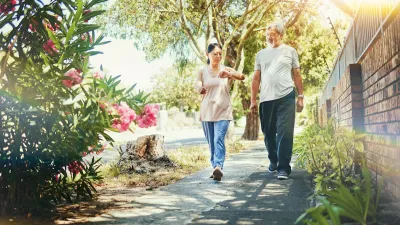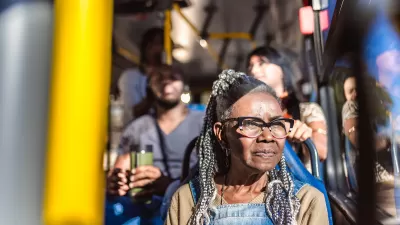New research seeks to learn how homes, neighborhoods, and communities affect how older residents are affected by climate change.

In a new paper published in Housing Policy Debate, Jennifer Molinsky and Ann Forsyth assess the influence of environmental factors on older adults’ vulnerability to climate change. This research is important because older adults are at “greater immediate risk” due to the higher likelihood of having mobility limitations, respiratory illnesses, or other risk factors, the authors explain.
The paper focuses on communities, neighborhoods, and homes as three nested but distinct spaces where climate risks can be mitigated or exacerbated in various ways. “For example, while the risk of severe storms, floods, or extreme heat differ by region, they can also vary locally by neighborhood, block, or house. A low-income renter may have little control over temperature or air quality in their building, creating greater exposure and sensitivity to heat, cold, or smoke entering the home through poorly sealed windows.” Meanwhile, residents of high-rise buildings may become stranded during an extreme weather event if elevators stop working. At the community scale, rural areas with few health facilities may predispose residents to worse health outcomes.
The authors note that more research is needed into the intersection of aging, climate change, and homes and neighborhoods, and the economic and demographic differences that impact how and where older people live.
FULL STORY: The Homes and Neighborhoods of Older Adults Shape Their Vulnerability to Climate Change

Study: Maui’s Plan to Convert Vacation Rentals to Long-Term Housing Could Cause Nearly $1 Billion Economic Loss
The plan would reduce visitor accommodation by 25,% resulting in 1,900 jobs lost.

North Texas Transit Leaders Tout Benefits of TOD for Growing Region
At a summit focused on transit-oriented development, policymakers discussed how North Texas’ expanded light rail system can serve as a tool for economic growth.

Using Old Oil and Gas Wells for Green Energy Storage
Penn State researchers have found that repurposing abandoned oil and gas wells for geothermal-assisted compressed-air energy storage can boost efficiency, reduce environmental risks, and support clean energy and job transitions.

Santa Barbara Could Build Housing on County Land
County supervisors moved forward a proposal to build workforce housing on two county-owned parcels.

San Mateo Formally Opposes Freeway Project
The city council will send a letter to Caltrans urging the agency to reconsider a plan to expand the 101 through the city of San Mateo.

A Bronx Community Fights to Have its Voice Heard
After organizing and giving input for decades, the community around the Kingsbridge Armory might actually see it redeveloped — and they want to continue to have a say in how it goes.
Urban Design for Planners 1: Software Tools
This six-course series explores essential urban design concepts using open source software and equips planners with the tools they need to participate fully in the urban design process.
Planning for Universal Design
Learn the tools for implementing Universal Design in planning regulations.
Ascent Environmental
Borough of Carlisle
Institute for Housing and Urban Development Studies (IHS)
City of Grandview
Harvard GSD Executive Education
Toledo-Lucas County Plan Commissions
Salt Lake City
NYU Wagner Graduate School of Public Service





























